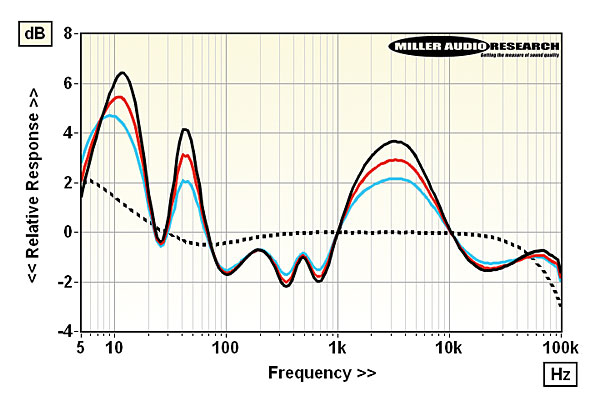BAT VK-80i Integrated Amplifier Tap Dancing
The four terminals on each side of the VK-80i can be configured to offer three separate transformer taps to pair with '6-8ohm', '4-6ohm' and '3-4ohm' speaker loads. These are referred to in BAT's manual as High, Med and Low, respectively, and step-down the high voltage/high impedance output of the 6C33C-B power triode tubes to better match the lower impedance and higher current demand of the attached loudspeaker. In practice, few speakers offer a fixed 4, 6 or 8ohm impedance – instead, the load swings up and down with frequency as the reactive components of crossover and drivers kick-in.

As the VK-80i's output impedance is still high its response is modulated by changes in speaker load, lifting with rising speaker impedance and falling with decreasing speaker impedance. Our reference B&W 800 D3 loudspeakers [HFN Oct '16] perfectly illustrate how the system response – the amp and speaker combined – is moderated by the impedance trend of your speaker choice. The inset Graph shows the native, unloaded response of the VK-80i [dashed trace] versus its response driving the 800 D3s via its High [black trace], Med [red] and Low [blue] output taps. The inductive upswing in the 800 D3's impedance encourages a lift the midrange/presence band, and every female vocalist, but it's the (max) +6.5Hz and +4.1dB boosts at 12Hz and 45Hz, respectively, that suggests the VK-80i is not an ideal partner for either vinyl-based systems or reflex-loaded speakers endowed with large woofers. PM


























































